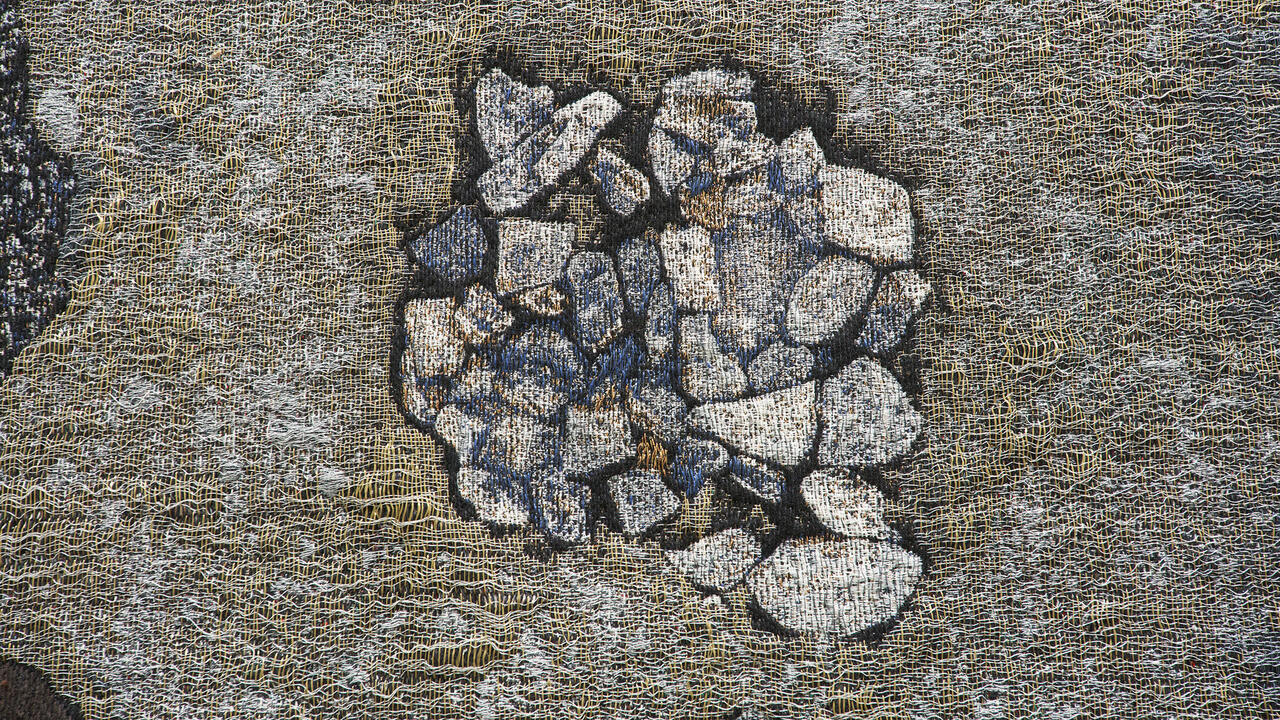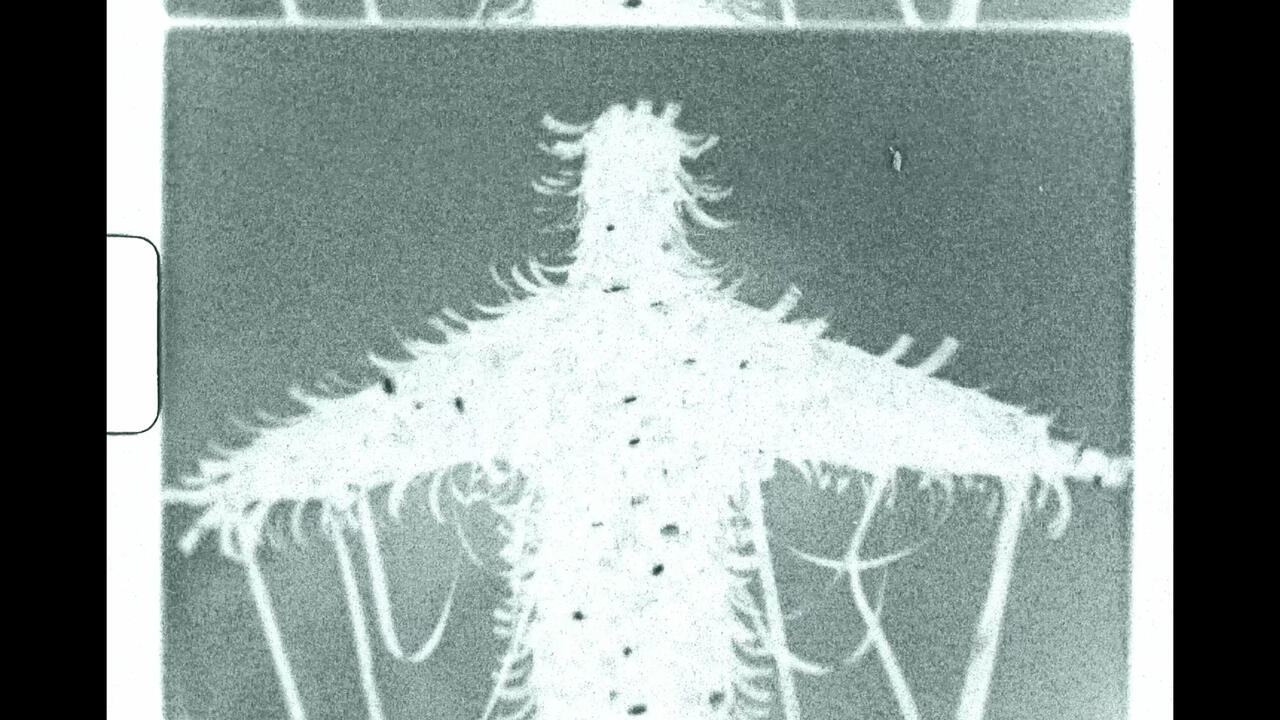‘Backbone’ Teams the Futuristic with the Handmade and Historical
At Carbon 12, Dubai, a group exhibition of sculptures, textiles and painting uses the spinal cord as a metaphor for the ties that bind us
At Carbon 12, Dubai, a group exhibition of sculptures, textiles and painting uses the spinal cord as a metaphor for the ties that bind us

Flesh, wool, bone, iridescent metals: ‘Backbone’ feels like walking into an abattoir aboard a spaceship. Organized by curatorial duo Salasil, aka Sara bin Safwan and Zainab Hasoon, the group exhibition brings together six artists and collectives across multiple media to consider the spinal cord as a metaphor for the invisible ties – or, perhaps, sinews – that bind. While the framing is rather abstract, the tightly curated exhibition – the works here seem to cohere on an instinctive, molecular level – is remarkable in the way it manages to team futurity with the handmade and the historical.

In one corner, a furry cow peers out of Malik Thomas Jalil’s textile drawing Night Encounter (2024). A closer look reveals that its form is articulated out of Arabic script-like marks, yet it remains asemic. Meanwhile, as an Indian, seeing a bovine form on orange, madder root-dyed silk immediately evokes Hindu Nationalism and its connection to the ongoing epidemic of cattle-related lynching. Two other works from Jalil further suggest a kind of vulnerable virility, especially in the beefy male figure of Mechanic Sat on the Pilgrims Way, Coquille Saint Jacque (2024), which is all chest hair and tendresse.

There is more softness in Jana Ghalayini’s layered collages and tapestries, which draw from her Palestinian heritage. A trio of small works, including Perpetual Lines of Columns in Character (2022), are handwoven in bright yarn and adorned with beads, metal rings and other haberdashery. They are as structured as they are cheerful, suggesting both painterly mark-making and an exuberantly glitching printer. Two monumental pieces hanging from the ceiling like weeping willows, Jellyfish and Being One (both 2023), have a rather elegiac, fragile air, as if they are on the precipice of unravelling at any minute.

The body is further intimated in the voluptuous mounds and rolling hills of Nour Malas’s smudgy atmospheric paintings, which are created by scraping away layers of oil paint with the back of a brush (e.g. Sorcerer, 2024). Together with Jalil’s works, her canvases form a warm, vegetal counterpoint to the colder palette that dominates the show. Even the most overtly cyberpunk works, like Alia Hamaoui’s Floating Roses (2023), are localized with the addition of the kind of floral embellishment usually found on wedding invitations and holiday giftboxes.

In many ways, this show is a masterclass in contrast. Yet, there isn’t any rigid division between hard and soft, between meatspace and the virtual, so much as a gently sliding scale of identification. In an alcove, the suspended chrome-effect surfaces of Audrey Large and Théophile Blandet’s Up Quark and Down Quark (both 2024) sway gently like extraterrestrial pelvises. Here, too, there is an emphasis on the line, which manifests as a filamentary thread of light. These resin sculptures are named after quantum states – or flavours, as they are satisfyingly known – of elementary particles. The movement of electricity through the works reflects their behaviour in ways that, as a non-physicist, I decidedly do not understand, but the material experimentation is seductive all the same.

In recent decades, the Gulf has become synonymous with science fiction, as governments in the region begin the transition to a post-oil future through spectacular architecture and high-octane megaprojects like NEOM. While Salasil describe their practice as ‘future focused’, ‘Backbones’ gladly eschews this technophilia for something more rooted in regional history, pre-Islamic mythology and the various textures and timbres of life before petromodernity. The result is an exhibition in which the future is imagined not by external consultants but by the people who will live in it.
‘Backbone’ is on view at Carbon 12, Dubai, until 7 September
Main image: Nour Malas, Untitled (detail), 2024, oil on panel, 20 × 25 cm. Courtesy: the artists and Carbon 12, Dubai























